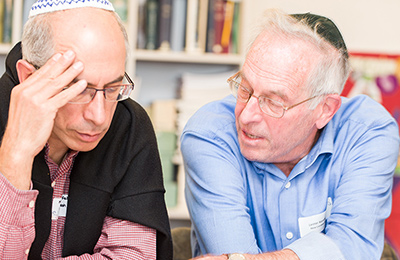Beha’alotcha

The Other Woman
Much has been made of the challenge to Moses in this week’s parashah: “Miriam and Aaron spoke against Moses because of the Kushite woman he had married: ‘He married a Kushite woman!’” (Num. 12:1). The commentators offer a surprising array of interpretations of this strange verse, but somehow they all find a way to assume that the woman in question was the Midianite Tzipporah, despite the fact that the verse names Kush, twice.
Our Sages were often pretty poor at geography, but it doesn’t take a great deal of research to identify that Kush and Midian were two very different places. Kush was a kingdom existing in the land that is now Sudan, Egypt, and Ethiopia. Midian was a kingdom stretching across the desert from southern Jordan to northern Saudi Arabia. So if we can’t explain away the anomaly of Midianite Tzipporah being from Kush, then we have to assume that the woman in question is not, in fact, Tzipporah. So – who is she?
Amazingly, besides the conventional version of Moses’s life that we’re all familiar with, there’s another version which, while perhaps constituting an inconvenient truth for the rabbinic narrative, has several surprising attestations in the space between legend and history. According to this version (Yalkut Shimoni 1:168 and Josephus, Antiquities 2:10:2), Moses spent much longer outside of Egypt than we normally assume.
Many of us probably imagine events as they are portrayed in The Prince of Egypt: teenage Moses flees Egypt, wanders the desert, discovers Tzipporah at a well, is adopted by Jethro, and spends the next 5 to 10 years with Jethro in Midian before encountering the burning bush.
The other version holds that he fled Egypt as a teenager, and then had an entire lifetime of bizarre and magical adventures, not returning to Midian until he was over 70! In these legends, a young Moses finds himself in Kush, where he marries the princess and helps stage a rebellion against a wicked king. In time (and with some sorcery thrown in for good measure), Moses helps the people defeat the king and they then crown him king and the princess queen.
After ruling Kush, Moses travels around to other kingdoms and other lands, only making his way to Midian late in life, where he meets Tzipporah and is met by God at the burning bush. What passes in the space between two sentences, “Moses fled before Pharaoh” and “he stayed in the land of Midian and sat by a well” (Exodus 2:15), becomes an entire lifetime. In the middle of a single verse, an entire adventurous, magical, fantastic life takes place – which is not described by the Torah.
If we’re to take this legend seriously, then the Kushite woman is no mystery at all. She is the queen of Kush, a remnant of Moses’s earlier life. She is part of Moses’s story before he encounters God and takes on the impossible task of leading the people from Egypt. If the woman in question is in fact this other woman, then perhaps we can understand Miriam and Aaron’s challenge in a whole new light. Perhaps we all may find that, like Moses, within one lifetime we may live several lives.
Rabbi Adam Zagoria-Moffet is the rabbi of St Albans Masorti Synagogue




